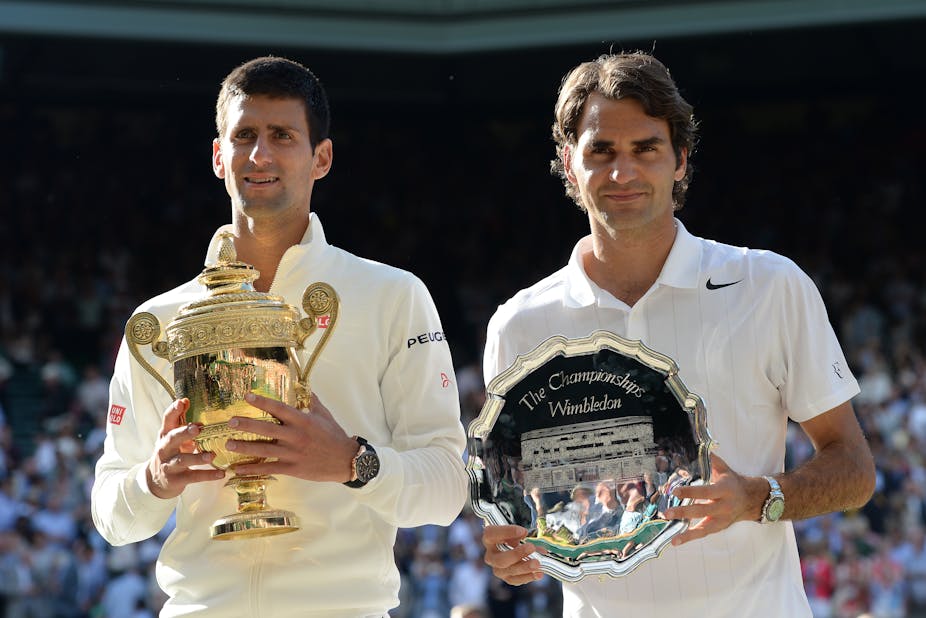Two down, two to go. We are halfway through the Grand Slam tennis season – the Australian and French Opens are passed, the US Open will be staged in September and Wimbledon is now underway. So far, Serena Williams, Novak Djokovic and Stanislaw Wawrinka have taken the major honours, but now there’s all to play for at the All England Club in south London.
At this year’s Wimbledon, total prize money of almost £27m is on offer, making it the world’s richest ever tennis Grand Slam. This compares with around £26m total prize money for the US Open, £23m for the Australian Open, and £22m for the French Open. For the singles competitions, Wimbledon’s prize money is as follows:

The 2015 tournament is especially notable as prize money has increased by the following from last year:
- Total +7%;
- Singles +7%
- Doubles +5%
- Mixed doubles +5%
- Wheelchair +28%
Wimbledon’s total prize money has increased by 83% since 2011. The potentially lucrative nature of Wimbledon for players is a reflection of the tournament’s general financial health. In 2014, Wimbledon reported an operating profit of £56.1m, an increase of 48% on 2013. Indeed, the UK’s Grand Slam generated 99% of the All England Tennis Club’s annual turnover during the last financial year – all largely within the two week summer period of the tournament.
By comparison, the combined ATP and WTA BNP Paribas Open tennis championship staged at Indian Wells in the United States has a combined total prize money of £6.5m, with the singles winners being awarded £650,000 each.
Sponsorship deals
One reason the Grand Slams are able to award prize money of this magnitude is the lucrative nature of the sponsorship deals they have signed. In 2014, it is estimated that the four tournaments generated US$268m from 63 associated brands, of which IBM was the largest (which is thought to have spent in the region of US$20.4m).
Of the four, the split was:
- US Open – US$89m generated from 23 partners
- French Open – $70m generated from 22 partners
- Wimbledon - US$65m generated from 12 partners
- Australian Open - US$44m generated from 18 partners.
Of the top sponsors, banks spent most on the slams, contributing around US$50m to the sponsorship coffers. Next on the list came watches (US$24.7m); cars (US$23.8m); software companies (US$20.4m) and fashion (US$16.4m).

Social media
Wimbledon has also very rapidly become something of a social media sensation. For instance, the following Twitter heat-map indicates how intense the global interest was in last year’s men’s final between Roger Federer and Novak Djokovic:

In 2013, when there was a British home win for the first time since 1936, Andy Murray’s victory help drive Twitter traffic. During the two weeks of the tournament, there were 6.6m tweets about Wimbledon, up from 2.5m tweets during the 2012 event.
In addition, Facebook reported more than 20m posts, comments and likes for the championship. The two men’s finalists, Djokovic and Murray, attracted 3.1m and 1.3m likes over the tournament. For the two women’s finalists Marion Bartoli and Sabine Lisicki – the equivalent figures were 18,412 and 290,000 respectively.
During Wimbledon 2014, we even saw a league table of the most positive tweets about male and female players being published. These were:

Social media is important for several reasons, most notably in the way it builds engagement with fans. At the same time, it is a way of keeping the tennis world informed and a potential source of revenue through advertising, sponsorship and endorsements.
Wider impact
The tournament’s impact extends way beyond the participants and the All-England Club. Some of the data presented in 2014, indicated the following:
- 54,250 tennis balls are used at the Championships
- 500,000 people typically attend the Championships
- 350,000 cups of tea and coffee are served in the two-week period
- 28,000kg of strawberries are consumed
- 28,600 branded towels will be purchased at the Wimbledon shop.
In other words, both Wimbledon and the other tennis Grand Slams generate a significant amount of economic activity.

Indeed, it has been estimated that the US Open tennis championship generates more than US$720m for the New York metro area. This is generated in several ways, including:
- 700,000 regular attendees, 45% are from outside the New York metro area, paying an average of US$142 per ticket
- Tournament revenues amounted to almost US$100m
- 13,000 seasonal jobs created as a result of the tournament
By comparison, the Australian Open is estimated to have a gross economic impact of AUS$200m.
Trying to compare each of the four Grand Slams is a difficult task – different times of the year, different cities, different venues, and no commonly agreed way of measuring their impact. Nevertheless, in 2012 Forbes ranked the competitions in the following order:
- Wimbledon
- US Open
- French Open
- Australian Open
In calculating the ranking, Forbes noted for example that while Wimbledon received more media mentions than the other slams, television ratings were highest for the French and US Opens. As such, while Wimbledon will seek to assert its dominance over the coming fortnight, the other three tournaments are never far behind.

